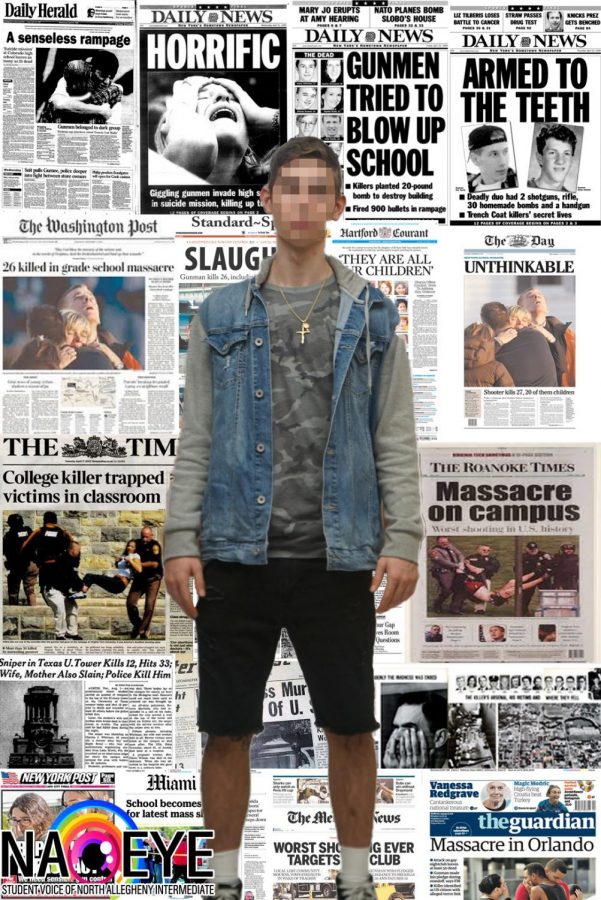Gun Violence: An Average American High School Story
It’s 2:30 pm. Twenty pairs of eyes are flicking back and forth from the clock to the window, watching the minute hand tick closer to dismissal time. The air is fraught with impatience as the students are waiting to get home and finally, finally relax. And then they hear gunshots.
Before the 2000s, when people would think about an average high school story, they would imagine awkward crushes, skipping gym class, and failing tests.
Now, it is becoming alarmly normal to experience a school shooting.
To put it in perspective, the Columbine shooting on April 20th, 1999, claimed thirteen victims and, at the time, was ranked as the fifth most deadliest shooting in America. The tragedy had occupied the nation for months on end, sparking debates about gun control, bullying, and mental health. It was the first school shooting of that year. On February 14th, 2018, we had our sixth.
Six. Six school shootings in 45 days. This is the sixth time our nation’s officials have made statements on how “shocked” and “saddened” they are. This is the sixth time that people have sent out thoughts and prayers, and this will be the sixth time we’ve forgotten about a shooting within a couple days. Another event will come take its place on the forefront of the news cycle and the world will go on. This kind of indifference causes people to ask: “What happened? What changed from Columbine that we’ve become so desensitized to mass violence?”
Charles Figley, director of the Traumatology Institute and a Professor of Social Work at Tulane University, says that there is a psychological reason for this. “There are two primary methods of dealing with a traumatic event: to respond, or to put it out of your mind. That’s what’s happening now. We’re still shocked, but we watch the people in the communities where this has happened, and we see their shock, their unpreparedness. We think, ‘There is nothing they could have done.’ The more frequently this happens, the more it reminds people there’s nothing they can do, so they put it out of their minds.”
School shootings – and shootings in general – occur so often now that’s it’s no surprise we’ve come to expect them. But thinking there’s nothing to be done? Children are dying. Every month, children are dying. Remember Sandy Hook and tell me there’s nothing to be done. Remember University of Texas and Columbine and Virginia Tech and Parkland and tell me that there is nothing to be done. Tell the survivors too. Tell the families of the victims. Shout into their faces that there is nothing to be done, because that is what we are doing every second we let partisan prejudices and ideology stop us from making changes. The lawmakers of this country should take responsibility and finally admit that yes, there is something that can be done – they can do their jobs. Millions of Americans are clamoring for the government to finally implement stronger preventative measures to protect against mass shootings, and it’s time for real policy changes to happen.
As Parkland shooting survivor David Hogg said, “We’re children, you guys are, like, the adults. Take action, work together, come over your politics and get something done.”



Yvette Wilson • Feb 24, 2018 at 3:11 am
This is my precious intelligent niece that has to endure these situations at school. It’s extremely hard to concentrate on getting an education when your mind is worried about these situations…
Trump needs to step up and take action in all the School districts…
No guns need to be in schools.. point blank period. Who’s to say a teacher, cafeteria worker, or principal may flip out and use their weapon on an innocent individual….
STOP ALL VIOLENCE…..
Brandon Zeitler • Mar 7, 2018 at 1:12 pm
I would like to disagree with the last comment on this post. I agree that President Trump needs to do something but, you have to imagine what he is going through at this moment. Arming teachers who pass a mental health test and goes through a conceal carry class should be armed at school to stop these shootings. Here at NAI we have a security guard that is unarmed and not prepared. If some teachers carried in school and there was a school intruder teachers could stop the intruder. I feel like Guns should be allowed to be on school premises to guard the students. #GUNCONTROLISSTUPID